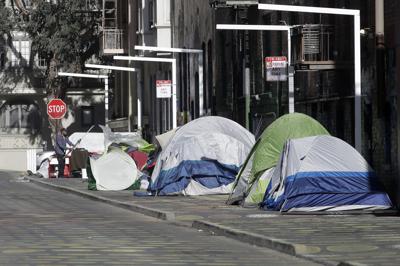Featured in the San Francisco Examiner:
Back in 2018, San Francisco voters passed the country’s first ballot measure requiring the universal right to counsel for tenants facing eviction.
But the approved measure, known as Proposition F, didn’t immediately live up to its full promise, covering two-thirds of eligible tenants. About half of them received limited representation. Those shortcomings are about to change.
The City’s recently agreed-upon budget, expected to pass in the coming weeks, would add an additional $6 million to the program, bringing its total budget to $17 million to better meet demand.
The boost in funding makes San Francisco home to one of the most robust tenant counsel offerings in the country, and certainly in California. It also comes as the state’s eviction moratorium is set to end Oct. 1.
“The fact that San Francisco has reached full funding is a very significant achievement,” said John Pollock, coordinator of the National Coalition for a Civil Right to Counsel, which tracks efforts around eviction representation. “There’s a massive imbalance of power…the system only functions for the side that has counsel.”
If you are charged with a crime, it’s understood that there will be a public defender provided if you are unable to afford a private attorney. If you face a civil matter like eviction, however, counsel is generally not guaranteed. Tenant and homelessness advocates say that needs to change in order to stabilize renters, preventing displacement and homelessness.
The California Apartment Association, which represents landlord interests statewide, disagrees. It called Assembly Bill 1487, which would establish a statewide legal services trust fund for tenants facing eviction, a “problematic bill” that would provide more funding for attorneys to delay legitimate eviction cases and cost landlords more in legal bills.
“With the existing funding, unethical tenant attorneys are funded to make false claims about property owners who are simply trying to regain possession of their properties from tenants who have failed to pay rent or who have created problems for other tenants at the property,” CAA wrote in a letter to legislators. “These firms that receive funding automatically and consistently utilize the same discovery and jury demands.”
San Francisco’s program, led by the Eviction Defense Collaborative agency, has been quite effective in warding off evictions. With representation from the tenant-right to counsel program, 67 percent of closed cases in 2019 resulted in the tenant remaining in their homes — 80 percent of whom were Black clients, according to the latest data from the Mayor’s Office of Housing and Community Development.
Renters who received services through the right-to-counsel program in 2019 were 94 percent low or moderate income tenants, 28 percent white, 23 percent Latino, 22 percent Black and 21 percent Asian and Pacific Islander.
Even if evictions aren’t avoided, Pollock said attorneys can negotiate the terms of departure that allows for more time to vacate as well as preventing a record of eviction following the renter around, making it hard to secure new housing. Eviction records can also ripple through matters of child custody and employment.
“It was clearly working and one of the best investments we could make in keeping people housed and avoiding homelessness,” said Supervisor Dean Preston, who co-authored Prop. F and has pushed for increased funding of the program. “We all know there’s going to be a huge increase in the number of eviction cases so it’s really good timing that the right to counsel funding is there.”
However, the estimated number of tenants in need of the service was assessed pre-pandemic. Most court and eviction proceedings were on pause last year and California later enacted a statewide eviction moratorium, which was recently extended once again to the end of September.
EDC is in the process of assessing needs from partner agencies like Asian Law Caucus to determine how funding will be doled out, giving everyone enough time to hire skilled attorneys. Last summer, the program anticipated cuts in the face of a tighter budget under the pandemic and some attorneys had to be laid off before a budget increase came through.
“It’s indispensable that we have access to this knowledge ahead of time,” said Ora Prochovnick, director of litigation and policy at EDC. “Tsunami, cliff or a flood, whatever, it is, there’s going to be a lot of people in jeopardy of losing their housing. We know that when people are represented they have a much greater likelihood of maintaining their housing.”
Updated estimates of need will be determined after the state’s eviction moratorium is lifted, said MOHCD spokesperson Max Barnes. A federal eviction moratorium is scheduled to expire on July 31. California is expected to extend its statewide moratorium until Sept. 30.
Assemblymember David Chiu, who as a San Francisco supervisor brought forward a tenant right to counsel pilot in 2012, has contemplated proposing a statewide program but said it is a “long-term conversation.”
In the meantime, legislatures continue to add funding for renters and homeowners in need of assistance to remain in their homes. AB 1487 was folded into the latest budget to bring $120 million over the next three years, Chiu said.
“It just never felt fair that you didn’t have a level playing field between the parties in eviction proceedings,” Chiu said. “Every day people should have access to lawyers, particularly when they’re about to be denied basic necessities like shelter. It has been critical that this funding and work is being done.”



